When a heifer calves for the first time, she has to experience a set of completely new maneuvers. Since she is not accustomed to these procedures, she can pose great threat to her handlers. The very first milking after calving is mostly uneventful in pluriparous animals. However, the farmer could lead himself into trouble once a heifer at his farm calves.
The heifers could feel stress during first few milkings. They may kick the handler or exhibit frequent stepping during milking. A few heifers show apparent signs of fear like arched back, lowered head, flattening of ears on head and clamping of tail in between both the hind limbs. On few occasions, the farmer could even lose milk when an excited heifer makes the bucket to tilt. The problematic phase could last for a few days to many weeks.

There are many ways the farmer can tackle this problem. These have been explained in detail in the following paragraphs.
The pregnant heifers could be trained for at least 10 days prior to expected date of calving. These training sessions could include parading pregnant heifers through milking areas/parlors without actual milking. The heifers’ udders could be massaged gently. It will most probably result in reduced restlessness during milking. The heifers may also exhibit lowered frequency of urination and defecation indicating reduction in fear stimuli. The heifers could also be brushed and groomed. Such groomed heifers are less likely to show kicking during milking. Another conditioning activity could be to allow expecting heifers to stand along with other pluriparous animals at the time of milking. They should also receive some allowance of concentrate ration at this time. The heifers should also be acclimatized for wearing a halter or tying a milkman’s knot. All these training activities must be carried out by the milkman himself. This will make the heifers more comfortable with the milkman and they will recognize him to be their caretaker. They will think the man in question won’t pose any kind of threat to them.
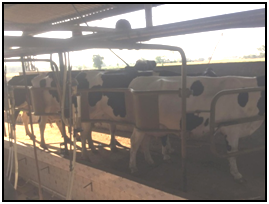
Most of the buffalo heifers are very possessive of their calves. They show very strong mothering instincts. At the time of milking, their calves should be tethered just close to them. The calf should always be visible to her mother. This will make the excited heifer very calm and one can easily milk her.

Most of the Punjabi farmers do not go for complete milking during first few days after parturition. Substantial amount of milk is deliberately left in the udder. After sometime, the teats and udder will become engorged with milk again. This condition will become very painful for the heifer. She will show some degree of reluctance at the following milking. On few occasion, she may not allow anybody to touch her teats or udder. Therefore, the heifers should be milked completely from the very first day.
Whichever place the heifer is to be milked at for the first time, it should be comfortable to her from all angles. The place should not be slippery at all. It should not have potholes. It should be free from sharp objects. The heifer can be controlled easily by cornering her alongside a wall and then, putting a long rope over her body on the opposite side as shown in Fig.3. In place of rope, a plank or smooth bamboo sticks can also be employed. Once the heifer is secured, the pre-milking maneuvers may be started very cautiously. One must remain attentive all the time till the milking is over.
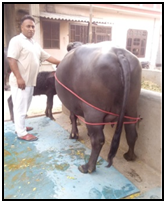
A few heifers become over-excited at the time of milking. They avoid human presence out of dread and often, try to kick sideways with either of their hind legs. The excited heifer should never be beaten by any means. Any type of beating will cause release of catecholamine from adrenals into blood circulation. It will immediately constrict blood vessels, thereby hindering blood supply to udder tissue. Oxytocin hormone from brain will not reach its target organ and the milk will remain withheld into the alveoli or in other words, there will not be let-down of milk into teats. Thus, the farmer may lose a substantial amount of milk.
The excited heifer must be first calmed down. Tapping an excited heifer at her back is the best way to make her calm. Offering some concentrate ration can also make her quiet. Some kind of conversation with her can make her more comfortable. Once she becomes serene, she should be caressed at hind quarters and legs. Her udder and teats should be approached and palpated softly thereafter.
A few heifers stand still when their tails are raised upwards (Fig. 4). The buffalo heifers can be restrained easily by tying their forelegs with a soft rope (Fig. 5). In case of cow heifers, milkman’s knot (Fig. 6) may be applied just above hocks of hind legs.
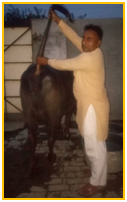
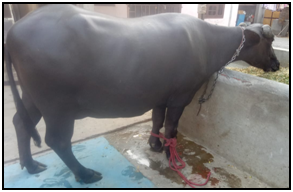
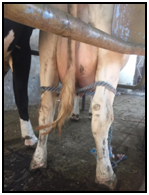
The heifers could also be controlled easily at the time of milking by using “Anti-kick Device” (Fig. 7). This device is adjustable. It is placed in a crossed fashion from one side to the other side over the back of the animal. It’s one end is fixed in left flank against the transverse processes of lumbar vertebrae and the other end is stationed in the skin flap of the rear flank region on the other side of the body. It is made tight enough to generate an impulse of pain whenever a heifer tries to kick with her hind legs.

Occasionally, the udder or teats of a heifer become inflamed. They look swollen, scarlet coloured and often, painful to touch. These occur most commonly during monsoons. The affected heifer might harbour infection in their udder or teats even before calving. Sometimes, the heifer develops udder oedema. Such udders are also not allowed to be touched. Such ailments first need to be got treated by a qualified veterinarian. The heifers will allow milking once the inflammation subsides.
At very few occasions, all these measures fail. The heifer becomes excited whenever a worker or an attendant approaches her. Such heifers can only be tamed by the use of approved sedatives. After a few days, she will become accustomed to standing still at the time of milking. Once the milking is over the heifer should be offered some concentrate ration as a prize. This practice will help the milking man to tame the heifer more quickly.
These methods of restraint should be employed for a limited period only. Once the heifer becomes accustomed to the process of milking, these procedures should be stopped slowly.
The taming of an excited heifer always remains an act of patience. Oxtocin is the principal hormone involved in the process of milking. It is produced from hypothalamus and released from posterior pituitary into blood stream at the time of milking. The sudden release of this hormone causes increased motility of urinary bladder and/or intestines leading to abrupt urination and/or defecation. It may spoil the clothing of the milking man at the time taming act. The milk man needs to hold his pique at this time. Maltreatment to heifer should be avoided at any cost. The heifer will require a few milkings to learn everything.
Thus, taming of excited heifers into well groomed animals is an art. The budding farmers can learn the tricks with longanimity. The excited heifers can be easily subdued. This will improve the daily milk output of a particular farm, thereby, improving its monetary returns.

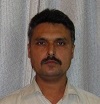

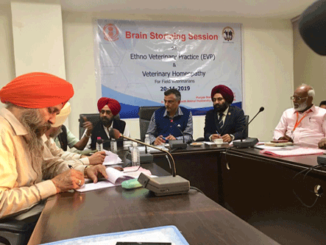


Be the first to comment